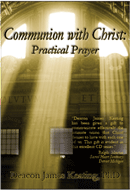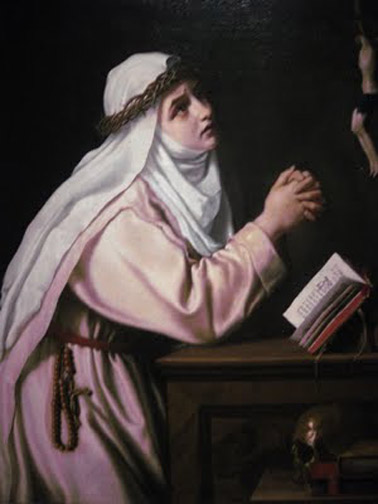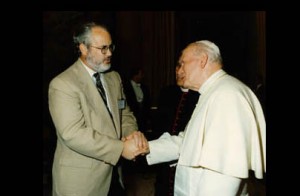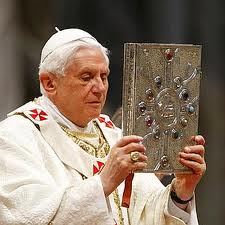Talk 2 - Love has Expelled All Fear From My Heart
[powerpress]
The Truth Will Set You Free is a series of talks Deacon James Keating gave at a day of reflection at Kenrick-Glennon Seminary in November 2010. Deacon Keating is the Director of Theological Formation for the  Institute for Priestly Formation at Creighton University.
Click here for more Deacon Keating
Tags: catholic, catholic podcast, catholic prayer, cathollc spirituality, creighton university, deacon, Deacon James Keating, Deacon Keating, heart, institute for priestly formation, james keating, kenrick glennon seminary, love, The Truth Will Set You Free, theological formation, truth
This entry was posted on Monday, November 29th, 2010 at 12:16 am
You can follow any responses to this entry through the RSS 2.0 feed.
1. Why do we celebrate Advent? What does it mean and what’s it all about?
2. What is the significance of the Advent Wreath, the nativity set, the different colors, etc. we see in Church?
[powerpress]
Mark Hart is an author, speaker, director and teacher, Mark’s work both written and spoken, is known across the country and world. While he serves as the Vice President of LIFE TEEN, he is known to tens of thousands simply as the “Bible Geek ®†Mark passionately echoes the gospel to all he encounters. He is as deep as he is funny, and his love for his wife and daughters is second only to his immense love for Jesus Christ.
Visit Mark at www.lifeteen.com
Tags: Advent Mark answers, advent wreath, bible, catholic, catholic podcast, catholic prayer, cathollc spirituality, life teen, love, mark hart, nativity, sacred scripture, why do we celebrate advent
This entry was posted on Sunday, November 28th, 2010 at 9:19 am
You can follow any responses to this entry through the RSS 2.0 feed.
Talk 1 – Our Fear of Truth
[powerpress]
The Truth Will Set You Free is a series of talks Deacon James Keating gave at a day of reflection at Kenrick-Glennon Seminary in November 2010. Deacon Keating is the Director of Theological Formation for the  Institute for Priestly Formation at Creighton University.
Check at more Deacon Keating
Tags: catholic, catholic podcast, catholic prayer, cathollc spirituality, deacon, Deacon James Keating, Deacon Keating, fear, institute for priestly formation, james keating, kenrick glennon seminary, The Truth Will Set You Free, theological formation, truth
This entry was posted on Sunday, November 28th, 2010 at 9:17 am
You can follow any responses to this entry through the RSS 2.0 feed.
First Sunday of Advent Cycle A – from the Gospel Matthew the full reading and reflection
“Watch; you do not know on what day your Lord is coming!”
an excerpt from today’s reflection: 
Jesus concludes his warning with a parable about a robbery that could have been prevented. If you knew that a thief wanted to steal your prized possession and your inheritance, wouldn’t you guard it with your life? How foolish to leave our treasure unguarded where the thief can easily steal. God promises each of us an inheritance and an eternal reward which he calls a “treasure beyond measure” (see the parable of the hidden treasure and the pearl of great price in Matthew 13:44-46). What is this treasure of immeasurable value? It is the Lord himself who is our treasure, and the kingdom he offers us is a kingdom of true and lasting peace, joy, and righteousness. The Lord offers us a personal relationship with him as his sons and daughters and the promise of eternal life as well. This imperishable treasure will outlast any earthly treasure. But it is possible that we could lose this treasure of supreme value if we allow sin or Satan to rob us of our faith and hope in God. Do you keep your sight on the heavenly treasure which awaits you?
“Lord Jesus Christ, you are my hope and salvation. Help me to never lose sight of the goal of heaven and give me fresh joy and zeal to live each day for your kingdom.”
for the full reflection visit : Daily Reading and Meditation
Tags: catholic, catholic podcast, catholic prayer, cathollc spirituality, daily reflections, parable of the hidden treasure
This entry was posted on Sunday, November 28th, 2010 at 12:02 am
You can follow any responses to this entry through the RSS 2.0 feed.
Episode 6 -The Way of Mystery: The Eucharist and Moral Living–  The Penitential Rite part 2 Are we afraid of silence, being alone with God, posture, and The domestic church.
The Penitential Rite part 2Â Are we afraid of silence, being alone with God, posture, and The domestic church.
[powerpress]
Deacon James Keating, PhD, the director of Theological Formation for the Institute for Priestly Formation, located at Creighton University, in Omaha, is making available to â€Discerning Hearts†and all who listen, his series of programs entitled “The Way of Mysteryâ€.
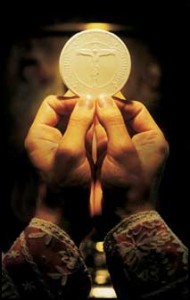 The Vatican II documents remind us that the spiritual journey is not made in a vacuum, that God has chosen to save us, not individually, but as The People of God. The Eucharist must help Christians to make their choices by discerning out of Christ’s paschal mystery. For this process to take place, however, Christians must first understand how the Eucharist puts them in touch with Christ’s passion, death, and resurrection, and what concrete implications being in touch with this mystery has for their daily lives.
The Vatican II documents remind us that the spiritual journey is not made in a vacuum, that God has chosen to save us, not individually, but as The People of God. The Eucharist must help Christians to make their choices by discerning out of Christ’s paschal mystery. For this process to take place, however, Christians must first understand how the Eucharist puts them in touch with Christ’s passion, death, and resurrection, and what concrete implications being in touch with this mystery has for their daily lives.
For more information on the “Institute of Priestly Formation†and for other material available by Deacon Keating, just click here
Don’t forget to pickup a copy of “Communion with Christ†, it is one of the best audio sets on prayer…ever!
Check out Deacon Keating’s “Discerning Heart†page
Tags: catholic, catholic podcast, catholic prayer, cathollc spirituality, communion, creighton university, Deacon James Keating, discerning heart, eucharist, institute for priestly formation, james keating, paschal mystery, pentential rite, prayer, spiritual journey, the eucharist, the mass, theological formation, way of mystery
This entry was posted on Saturday, November 27th, 2010 at 5:55 pm
You can follow any responses to this entry through the RSS 2.0 feed.
Episode 8 – The Papacy: The Apostolic Throne
Roots of the Faith – From the Church Fathers to You with Mike Aquilina, makes clear that just as an acorn grows into a tree and yet remains the same plant, so the Catholic Church is a living organism that has grown from the faith of the earliest Christians into the body of Christ we know today. Hosted by Kris McGregor
makes clear that just as an acorn grows into a tree and yet remains the same plant, so the Catholic Church is a living organism that has grown from the faith of the earliest Christians into the body of Christ we know today. Hosted by Kris McGregor
[powerpress]
Also visit Mike’s “Discerning Hearts†page for more audio downloads and information!
Tags: catholic, catholic podcast, catholic prayer, cathollc spirituality, church fathers, fathers of the church, mike aquilina, papacy
This entry was posted on Saturday, November 27th, 2010 at 9:15 am
You can follow any responses to this entry through the RSS 2.0 feed.
Vatican City –From Pope Benedict’s Wednesday General Audience from vatican.va
Dear Brothers and Sisters,
Today I would like to talk to you about a woman who played an eminent role in the history of the Church: St Catherine of Siena. The century in which she lived — the 14th — was a troubled period in the life of the Church and throughout the social context of Italy and Europe. Yet, even in the most difficult times, the Lord does not cease to bless his People, bringing forth Saints who give a jolt to minds and hearts, provoking conversion and renewal.
Catherine is one of these and still today speaks to us and impels us to walk courageously toward holiness to be ever more fully disciples of the Lord.
Born in Siena in 1347, into a very large family, she died in Rome in 1380. When Catherine was 16 years old, motivated by a vision of St Dominic, she entered the Third Order of the Dominicans, the female branch known as the Mantellate. While living at home, she confirmed her vow of virginity made privately when she was still an adolescent and dedicated herself to prayer, penance and works of charity, especially for the benefit of the sick.
When the fame of her holiness spread, she became the protagonist of an intense activity of spiritual
guidance for people from every walk of life: nobles and politicians, artists and ordinary people, consecrated men and women and religious, including Pope Gregory xi who was living at Avignon in that period and whom she energetically and effectively urged to return to Rome.
She travelled widely to press for the internal reform of the Church and to foster peace among the States. It was also for this reason that Venerable Pope John Paul ii chose to declare her Co-Patroness of Europe: may the Old Continent never forget the Christian roots that are at the origin of its progress and continue to draw from the Gospel the fundamental values that assure justice and harmony.
Like many of the Saints, Catherine knew great suffering. Some even thought that they should not trust her, to the point that in 1374, six years before her death, the General Chapter of the Dominicans summoned her to Florence to interrogate her. They appointed Raymund of Capua, a learned and humble Friar and a future Master General of the Order, as her spiritual guide. Having become her confessor and also her “spiritual sonâ€, he wrote a first complete biography of the Saint. She was canonized in 1461.
The teaching of Catherine, who learned to read with difficulty and learned to write in adulthood, is contained in the Dialogue of Divine Providence or Libro della Divina Dottrina, a masterpiece of spiritual literature, in her Epistolario and in the collection of her Prayers.
Her teaching is endowed with such excellence that in 1970 the Servant of God Paul VI declared her a Doctor of the Church, a title that was added to those of Co-Patroness of the City of Rome — at the wish of Bl. Pius ix — and of Patroness of Italy — in accordance with the decision of Venerable Pius XII.
In a vision that was ever present in Catherine’s heart and mind Our Lady presented her to Jesus who gave her a splendid ring, saying to her: “I, your Creator and Saviour, espouse you in the faith, that you will keep ever pure until you celebrate your eternal nuptials with me in Heaven†(Bl. Raimondo da Capua, S. Caterina da Siena, Legenda maior, n. 115, Siena 1998). This ring was visible to her alone. In this extraordinary episode we see the vital centre of Catherine’s religious sense, and of all authentic spirituality: Christocentrism. For her Christ was like the spouse with whom a relationship of intimacy, communion and faithfulness exists; he was the best beloved whom she loved above any other good. This profound union with the Lord is illustrated by another episode in the life of this outstanding mystic: the exchange of hearts. According to Raymond of Capua who passed on the confidences Catherine received, the Lord Jesus appeared to her “holding in his holy hands a human heart, bright red and shiningâ€. He opened her side and put the heart within her saying: “Dearest daughter, as I took your heart away from you the other day, now, you see, I am giving you mine, so that you can go on living with it for ever†(ibid.). Catherine truly lived St. Paul’s words, “It is no longer I who live, but Christ who lives in me†(Gal 2:20).
Like the Sienese Saint, every believer feels the need to be conformed with the sentiments of the heart of Christ to love God and his neighbour as Christ himself loves. And we can all let our hearts be transformed and learn to love like Christ in a familiarity with him that is nourished by prayer, by meditation on the Word of God and by the sacraments, above all by receiving Holy Communion frequently and with devotion. Catherine also belongs to the throng of Saints devoted to the Eucharist with which I concluded my Apostolic Exhortation Sacramentum Caritatis (cf. n. 94). Dear brothers and sisters, the Eucharist is an extraordinary gift of love that God continually renews to nourish our journey of faith, to strengthen our hope and to inflame our charity, to make us more and more like him.
A true and authentic spiritual family was built up around such a strong and genuine personality; people fascinated by the moral authority of this young woman with a most exalted lifestyle were at times also impressed by the mystical phenomena they witnessed, such as her frequent ecstasies. Many put themselves at Catherine’s service and above all considered it a privilege to receive spiritual guidance from her. They called her “mother†because, as her spiritual children, they drew spiritual nourishment from her. Today too the
Church receives great benefit from the exercise of spiritual motherhood by so many women, lay and consecrated, who nourish souls with thoughts of God, who strengthen the people’s faith and direct Christian life towards ever loftier peaks. “Son, I say to you and call youâ€, Catherine wrote to one of her spiritual sons, Giovanni Sabbatini, a Carthusian, “inasmuch as I give birth to you in continuous prayers and desire in the presence of God, just as a mother gives birth to a son†(Epistolario, Lettera n. 141: To Fr Giovanni de’ Sabbatini). She would usually address the Dominican Fr Bartolomeo de Dominici with these words: “Most beloved and very dear brother and son in Christ sweet Jesusâ€.
Another trait of Catherine’s spirituality is linked to the gift of tears. They express an exquisite, profound sensitivity, a capacity for being moved and for tenderness. Many Saints have had the gift of tears, renewing the emotion of Jesus himself who did not hold back or hide his tears at the tomb of his friend Lazarus and at the grief of Mary and Martha or at the sight of Jerusalem during his last days on this earth. According to Catherine, the tears of Saints are mingled with the blood of Christ, of which she spoke in vibrant tones and with symbolic images that were very effective: “Remember Christ crucified, God and man….. Make your aim the Crucified Christ, hide in the wounds of the Crucified Christ and drown in the blood of the Crucified Christ†(Epistolario, Lettera n. 21: Ad uno il cui nome si tace [to one who remains anonymous]). Here we can understand why, despite her awareness of the human shortcomings of priests, Catherine always felt very great reverence for them: through the sacraments and the word they dispense the saving power of Christ’s Blood. The Sienese Saint always invited the sacred ministers, including the Pope whom she called “sweet Christ on earthâ€, to be faithful to their responsibilities, motivated always and only by her profound and constant love of the Church. She said
before she died: “in leaving my body, truly I have consumed and given my life in the Church and for the Holy Church, which is for me a most unique grace†(Raimondo da Capua, S. Caterina da Siena, Legenda maior, n. 363). Hence we learn from St Catherine the most sublime science: to know and love Jesus Christ and his Church. In the Dialogue of Divine Providence, she describes Christ, with an unusual image, as a bridge flung between Heaven and earth. This bridge consists of three great stairways constituted by the feet, the side and the mouth of Jesus. Rising by these stairways the soul passes through the three stages of every path to sanctification: detachment from sin, the practice of the virtues and of love, sweet and loving union with God.
Dear brothers and sisters, let us learn from St Catherine to love Christ and the Church with courage, intensely and sincerely. Therefore let us make our own St Catherine’s words that we read in the Dialogue of Divine Providence at the end of the chapter that speaks of Christ as a bridge: “out of mercy you have washed us in his Blood, out of mercy you have wished to converse with creatures. O crazed with love! It did not suffice for you to take flesh, but you also wished to die!… O mercy! My heart drowns in thinking of you: for no matter where I turn to think, I find only mercy†(chapter 30, pp. 79-80). Thank you.
Tags: benedict xvi, catherine of siena, catholic, catholic podcast, catholic prayer, cathollc spirituality, mystic, mystic of the Church, mystical experiences, mystical revelations, mystical visions, st dominic, women of the middle ages
This entry was posted on Wednesday, November 24th, 2010 at 6:35 pm
You can follow any responses to this entry through the RSS 2.0 feed.
 St. Andrew Dung Lac and Companions
St. Andrew Dung Lac and Companions
Nov 24th, 2010 by Omar F. A. Gutierrez (check out Regnum Novum)
Today marks the Memorial of the Martyrs of Vietnam often referred to as the Memorial of Andrew Dung Lac and Companions. This is an interesting memorial in that the number of martyrs commemorated include about 117 names of known martyrs but also the untold thousands whom we do not know. Furthermore, the memorial is for martyrs from various times in Vietnam’s history, from the 17th through the 20th centuries.The memorial was set by Pope John Paul the Great on June 19th, 1988. He canonized 117 Vietnamese but noted that there were somewhere between 130,000 to 300,000 martyrs for the Catholic faith in that nation. The suffering of these people has been astounding. In the 19th century, when persecution of Catholics was at its worst, entire villages of Vietnamese were slaughtered by the regime. The reason given was that the Catholics were involved in political revolutions, attempting to put a Catholic-friendly ruler into power. Being Catholic, then, became a crime, and, echoing the years of Christian persecution in Ancient Rome, Vietnamese were called upon to stomp on a crucifix to prove that they were not Christian. Those who refused were tortured horribly and then killed. The lucky ones were only branded on their faces with the Vietnamese words for “perverse religion.â€
During the fall of Vietnam to Communist rule in the 20th century and of course due to the war, many Vietnamese fled their homeland and came to the United States. Interestingly, since about 1977, the American Vietnamese community has had a four-day celebration in little Carthage, Missouri dedicated to Our Lady and in celebration of their heritage and faith. The Marian Days Festival happens every year in the summer and the small Missouri town is inundated with upwards of 50,000 Vietnamese who celebrate Mass together, sing to Our Lady of Fatima, and eat really good Vietnamese food.
This memorial to the Vietnamese Martyrs ought to remind us of one of the greatest of Vietnamese Catholics, Cardinal Francis Xavier Nguyen Van Thuan. Cardinal Francis Xavier, as he liked to introduce himself, had a meteoric rise in Vietnam as a young man. The son of very devout Catholic parents, he was extremely bright. He earned advanced degrees in theology, philosophy, and canon law all by the time he was in his early twenties.
He eventually became the coadjutor bishop of Saigon in 1975. Six days later, Saigon fell to the North Vietnamese, and the Cardinal was thrown into prison. He spent thirteen years there, nine of them in solitary confinement. While in confinement a village boy would bring him paper, and Cardinal Van Thuan would write down some encouraging word or phrase. These messages from the Cardinal in prison helped bouey the people for which he was still a shepherd. They have since then been compiled into the books The Road to Hope and Prayers of Hope.
He was released from prison in 1988, the same year as the canonization of the Vietnamese Martyrs. He was allowed to leave for Rome in 1991, but was then never allowed back by the government…that is until 2001.
While in Rome, he made many impressions on people, not the least of these being Pope John Paul the Great. It was that Holy Father who in 1994 elevated the little bishop from Vietnam to be President of the Pontifical Council of Justice and Peace and made him a Cardinal.
In 1999, in the document to us Ecclesia in America (The Church in America), John Paul wrote:
54. Faced with the grave social problems which, with different characteristics, are present throughout America, Catholics know that they can find in the Church’s social doctrine an answer which serves as a starting-point in the search for practical solutions. Spreading this doctrine is an authentic pastoral priority. … In this regard, special care must be taken to train lay persons capable of working, on the basis of their faith in Christ, to transform earthly realities. In addition, it will help to promote and support the study of this doctrine in every area of the life of the particular Churches in America, especially in the universities, so that it may be more deeply known and applied to American society. The complex social reality of the continent is a fruitful field for the analysis and application of the universal principles contained in this doctrine.
To this end, it would be very useful to have a compendium or approved synthesis of Catholic social doctrine, including a “Catechismâ€, which would show the connection between it and the new evangelization.
It was then up to Cardinal Nguyen Van Thuan to try to make heads or tails out of the vast array of social documents and social commentary, to try to bring together people from vastly different political and social backgrounds, to try to – in Herculean manner – build an edifice for the Social Doctrine of the Church that would at once stand the test of time but also be relevant to our lives here and now. This was no small task, but it was his.
The Compendium we have now is a splendid work which accomplishes everything that the good Cardinal desired. Unfortunately, he died before its completion in 2002. Still the preliminary work and guidance which he provided proved decisive for the construction of one of the most useful tools for the social doctrine that exists. Cardinal Van Thuan’s process for canonization was opened in 2007, having met the minimum 5 years. Pope Benedict XVI actually mentions Cardinal Van Thuan in his second encyclical Spe Salvi as a “witness to hope.â€
So on this day of remembrance for the Vietnamese Martyrs, remember them, remember Cardinal Francis Xavier Nguyen Van Thuan, and remember to be thankful for the great peace and tranquility that our culture affords us in being able to pray freely.
I’ll leave you with the ten rules of life by which the Cardinal lived. Go here to learn more.
 1. I will live the present moment to the fullest.
1. I will live the present moment to the fullest.
2. I will discern between God and God’s works.
3. I will hold firmly to one secret: prayer.
4. I will see in the Holy Eucharist my only power.
5. I will have only one wisdom: the science of the Cross.
6. I will remain faithful to my mission in the Church and for the Church as a witness of Jesus Christ.
7. I will seek the peace the world cannot give.
8. I will carry out a revolution by renewal in the Holy Spirit.
9. I will speak one language and wear one uniform: Charity.
10. I will have one very special love: The Blessed Virgin Mary.
Oh and this:
I am happy here, in this cell, where white mushrooms are growing on my sleeping mat, because You are here with me, because You want me to live here with You. I have spoken much in my lifetime: now I speak no more. It’s Your turn to speak to me, Jesus; I am listening to You.
Recorded on the Feast of the Holy Rosary, October 7, 1976, in Phu-Khanh prison during his solitary confinement. Regnum Novum
 Thanks one again Omar G. for an outstanding contribution to our on going formation!
Thanks one again Omar G. for an outstanding contribution to our on going formation!
Tags: Andrew Dung Lac, Cardinal Francis Xavier Nguyen Van Thuan, Cardinal Nguyen Van Thuan, catholic, catholic podcast, catholic prayer, cathollc spirituality, christian persecution, martyrs, pope john paul, pope john paul the great, vietnamese community
This entry was posted on Wednesday, November 24th, 2010 at 8:20 am
You can follow any responses to this entry through the RSS 2.0 feed.
Show 12 – Teens and the Birth Control Pill
The dangers we place our teen age girls bodies in when we place them on the birth control pill. Dr. Hilgers also discusses other drugs and vaccines they would give our girls, as well as the problems with condems. Dr. Hilgers speaks as well of the importance of the need for the proper sexual education for our kids. Timely and important discussion for us all who wish to stand against the “culture of death”.
“Your Fertility Care Consultâ€
with Dr. Thomas Hilgers, founder of the Pope Paul VI Institute
for The Study of Human Reproduction
hosted by Kris McGregor
[powerpress]
Tags: catholic, catholic podcast, catholic prayer, cathollc spirituality, Contraception, fertility care, human reproduction, pope paul vi, pope paul vi institute, thomas hilgers
This entry was posted on Monday, November 22nd, 2010 at 3:54 pm
You can follow any responses to this entry through the RSS 2.0 feed.
Episode 5 -The Way of Mystery: The Eucharist and Moral Living–  The penitential rite of the mass, while not the pivotal point, it is one of the most important points of the mass, and key in our moral conversion…it’s about the crucifixion to sin, meeting evil with love.
The penitential rite of the mass, while not the pivotal point, it is one of the most important points of the mass, and key in our moral conversion…it’s about the crucifixion to sin, meeting evil with love.
[powerpress]
Deacon James Keating, PhD, the director of Theological Formation for the Institute for Priestly Formation, located at Creighton University, in Omaha, is making available to â€Discerning Hearts†and all who listen, his series of programs entitled “The Way of Mysteryâ€.
 The Vatican II documents remind us that the spiritual journey is not made in a vacuum, that God has chosen to save us, not individually, but as The People of God. The Eucharist must help Christians to make their choices by discerning out of Christ’s paschal mystery. For this process to take place, however, Christians must first understand how the Eucharist puts them in touch with Christ’s passion, death, and resurrection, and what concrete implications being in touch with this mystery has for their daily lives.
The Vatican II documents remind us that the spiritual journey is not made in a vacuum, that God has chosen to save us, not individually, but as The People of God. The Eucharist must help Christians to make their choices by discerning out of Christ’s paschal mystery. For this process to take place, however, Christians must first understand how the Eucharist puts them in touch with Christ’s passion, death, and resurrection, and what concrete implications being in touch with this mystery has for their daily lives.
For more information on the “Institute of Priestly Formation†and for other material available by Deacon Keating, just click here
Don’t forget to pickup a copy of “Communion with Christ†, it is one of the best audio sets on prayer…ever!
Check out Deacon Keating’s “Discerning Heart†page
Tags: catholic, catholic podcast, catholic prayer, cathollc spirituality, communion, Deacon James Keating, discerning heart, institute for priestly formation, james keating, paschal mystery, penitential rite, spiritual journey, the eucharist, the mass, theological formation, way of mystery
This entry was posted on Sunday, November 21st, 2010 at 10:29 pm
You can follow any responses to this entry through the RSS 2.0 feed.
Don’t pass this video by…
I promise it will touch your heart
Tags: catholic, catholic podcast, catholic prayer, cathollc spirituality
This entry was posted on Sunday, November 21st, 2010 at 8:34 pm
You can follow any responses to this entry through the RSS 2.0 feed.
Episode 2 – Regnum Novum: Bringing forth the New Evangelization through Catholic Social Teaching with Omar Guiterrez – Introduction and Value # 2 – Communion not opposition
– Introduction and Value # 2 – Communion not opposition
Discerning Hearts is blessed to present Omar F. A. Guiterrez, M.A. , Special Assistant  to Archbishop George Lucas of the Archdiocese of Omaha, in a groundbreaking series which breaks open the heart of Catholic Social Doctrine.
We encourage you to visit “Regnum Novum – A New Kingdom: A Revolution†Omar Guiterrez’s blog site
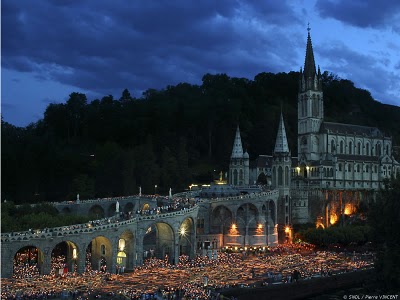 We live at a very special time. The confluence of many things has brought forth the clear need to be able to articulate the Social Teaching of the Catholic Church in a way that is accessible and applicable. This is not to be an effort where high-minded theories are to be bandied about. Rather, this is a time of opportunity wherein we can apply the Social Doctrine to the concrete so as to bring about a New Kingdom, a Revolution. – Omar G. from Regnum Novum
We live at a very special time. The confluence of many things has brought forth the clear need to be able to articulate the Social Teaching of the Catholic Church in a way that is accessible and applicable. This is not to be an effort where high-minded theories are to be bandied about. Rather, this is a time of opportunity wherein we can apply the Social Doctrine to the concrete so as to bring about a New Kingdom, a Revolution. – Omar G. from Regnum Novum
[powerpress]
From episode … 2.   Communion not opposition
As I say in some of my posts, there is a spirit of opposition in a good deal of the social work that happens today. The corruption of workers’ unions is one of the great tragedies of our day. Imagine what great work they could do on top of the many achievements they’ve made. But they do not universally do great work because they are caught up in the oppositionist paradigms that make integral human development impossible.
True social justice requires that we drop these paradigms of opposition: management vs. labor; bourgeois vs. proletariat; state vs. individual. We own the great Catholic both/and. It applies to the Social Teaching of the Catholic Church more than ever.
Also visit Omar’s “Discerning Hearts†page Catholic Social Teaching 101
Tags: catholic, catholic podcast, catholic prayer, catholic social doctrine, catholic social justice, catholic social teaching, cathollc spirituality, new evangelization, Omar Guiterrez
This entry was posted on Friday, November 19th, 2010 at 5:34 pm
You can follow any responses to this entry through the RSS 2.0 feed.
Part 2 – A very special edition of “Inside the Pages†as we explore Pope Ben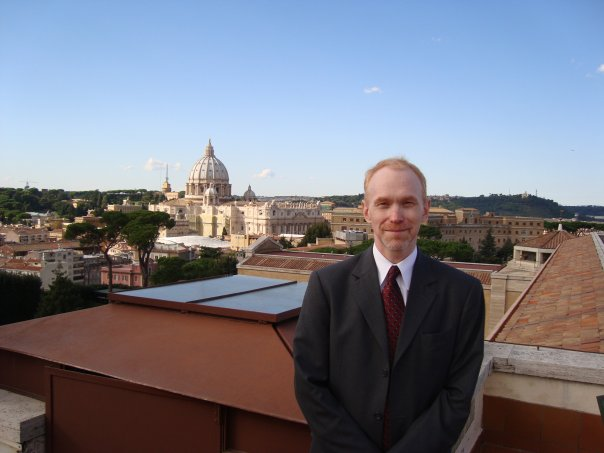 edict’s Apostolic Exhortation, “Verbum Domini†(The Word of the Lord), with Dr. Matthew Bunson. A magnificent gift for the Church, Dr. Bunson breaks open in part 2 of our discussion the liturgy, homelitics and the significance of the document. We encourage you to check out the document yourself by clicking on the links below.
edict’s Apostolic Exhortation, “Verbum Domini†(The Word of the Lord), with Dr. Matthew Bunson. A magnificent gift for the Church, Dr. Bunson breaks open in part 2 of our discussion the liturgy, homelitics and the significance of the document. We encourage you to check out the document yourself by clicking on the links below.
We encourage you to visit the Vatican website so you can read, ponder, and download “Verbum Domini”
[powerpress]
Tags: Apostolic Exhortation, catholic, catholic podcast, catholic prayer, cathollc spirituality, matthew bunson, pope benedict, the liturgy, verbum domini, word of the lord
This entry was posted on Friday, November 19th, 2010 at 7:48 am
You can follow any responses to this entry through the RSS 2.0 feed.
According to the Catholic Encyclopedia, the origins of Corpus Christi can be traced to St. Juliana of Mount Cornillon.
From Pope Benedict’s General Audience from vatican.va
Dear Brothers and Sisters,
This morning too I would like to introduce a female figure to you. She is little known but the Church is deeply indebted to her, not only because of the holiness of her life but also because, with her great fervour, she contributed to the institution of one of the most important solemn Liturgies of the year:Â Corpus Christi.
She is St Juliana de Cornillon, also known as St Juliana of Liège. We know several facts about her life, mainly from a Biography that was probably written by a contemporary cleric; it is a collection of various testimonies of people who were directly acquainted with the Saint.
Juliana was born near Liège, Belgium between 1191 and 1192. It is important to emphasize this place because at that time the Diocese of Liège was, so to speak, a true “Eucharistic Upper Roomâ€. Before Juliana, eminent theologians had illustrated the supreme value of the Sacrament of the Eucharist and, again in Liège, there were groups of women generously dedicated to Eucharistic worship and to fervent communion. Guided by exemplary priests, they lived together, devoting themselves to prayer and to charitable works.
Orphaned at the age of five, Juliana, together with her sister Agnes, was entrusted to the care of the Augustinian nuns at the convent and leprosarium of Mont-Cornillon.
She was taught mainly by a sister called “Sapienza†[wisdom], who was in charge of her spiritual development to the time Juliana received the religious habit and thus became an Augustinian nun.
She became so learned that she could read the words of the Church Fathers, of St Augustine and St Bernard in particular, in Latin. In addition to a keen intelligence, Juliana showed a special propensity for contemplation from the outset. She had a profound sense of Christ’s presence, which she experienced by living the Sacrament of the Eucharist especially intensely and by pausing frequently to meditate upon Jesus’ words: “And lo, I am with you always, to the close of the age†(Mt 28:20).
When Juliana was 16 she had her first vision which recurred subsequently several times during her Eucharistic adoration. Her vision presented the moon in its full splendour, crossed diametrically by a dark stripe. The Lord made her understand the meaning of what had appeared to her. The moon symbolized the life of the Church on earth, the opaque line, on the other hand, represented the absence of a liturgical feast for whose institution Juliana was asked to plead effectively: namely, a feast in which believers would be able to adore the Eucharist so as to increase in faith, to advance in the practice of the virtues and to make reparation for offences to the Most Holy Sacrament.
Juliana, who in the meantime had become Prioress of the convent, kept this revelation that had filled her heart with joy a secret for about 20 years. She then confided it to two other fervent adorers of the Eucharist, Blessed Eva, who lived as a hermit, and Isabella, who had joined her at the Monastery of Mont-Cornillon. The three women established a sort of “spiritual alliance†for the purpose of glorifying the Most Holy Sacrament.
They also chose to involve a highly regarded Priest, John of Lausanne, who was a canon of the Church of St Martin in Liège. They asked him to consult theologians and clerics on what was important to them. Their affirmative response was encouraging.
What happened to Juliana of Cornillon occurs frequently in the lives of Saints. To have confirmation that an inspiration comes from God it is always necessary to be immersed in prayer to wait patiently, to seek friendship and exchanges with other good souls and to submit all things to the judgement of the Pastors of the Church.
It was in fact Bishop Robert Torote, Liège who, after initial hesitation, accepted the proposal of Juliana and her companions and first introduced the Solemnity of Corpus Christi in his diocese. Later other Bishops following his example instituted this Feast in the territories entrusted to their pastoral care.
However, to increase their faith the Lord often asks Saints to sustain trials. This also happened to Juliana who had to bear the harsh opposition of certain members of the clergy and even of the superior on whom her monastery depended.
Of her own free will, therefore, Juliana left the Convent of Mont-Cornillon with several companions. For 10 years — from 1248 to 1258 — she stayed as a guest at various monasteries of Cistercian sisters.
She edified all with her humility, she had no words of criticism or reproach for her adversaries and continued zealously to spread Eucharistic worship.
She died at Fosses-La-Ville, Belgium, in 1258. In the cell where she lay the Blessed Sacrament was exposed and, according to her biographer’s account, Juliana died contemplating with a last effusion to love Jesus in the Eucharist whom she had always loved, honoured and adored. Jacques Pantaléon of Troyes was also won over to the good cause of the Feast of Corpus Christi during his ministry as Archdeacon in Lièges. It was he who, having become Pope with the name of Urban iv in 1264, instituted the Solemnity of Corpus Christi on the Thursday after Pentecost as a feast of precept for the universal Church.
In the Bull of its institution, entitled Transiturus de hoc mundo, (11 Aug. 1264), Pope Urban even referred discreetly to Juliana’s mystical experiences, corroborating their authenticity. He wrote: “Although the Eucharist is celebrated solemnly every day, we deem it fitting that at least once a year it be celebrated with greater honour and a solemn commemoration.
“Indeed we grasp the other things we commemorate with our spirit and our mind, but this does not mean that we obtain their real presence. On the contrary, in this sacramental commemoration of Christ, even though in a different form, Jesus Christ is present with us in his own substance. While he was about to ascend into Heaven he said ‘And lo, I am with you always, to the close of the age’ (Matthew 28:20)â€.
The Pontiff made a point of setting an example by celebrating the solemnity of Corpus Christi in Orvieto, the town where he was then residing. Indeed, he ordered that the famous Corporal with the traces of the Eucharistic miracle which had occurred in Bolsena the previous year, 1263, be kept in Orvieto Cathedral — where it still is today.
While a priest was consecrating the bread and the wine he was overcome by strong doubts about the Real Presence of the Body and Blood of Christ in the sacrament of the Eucharist. A few drops of blood began miraculously to ooze from the consecrated Host, thereby confirming what our faith professes.
Urban iv asked one of the greatest theologians of history, St Thomas Aquinas — who at that time was accompanying the Pope and was in Orvieto — to compose the texts of the Liturgical Office for this great feast. They are masterpieces, still in use in the Church today, in which theology and poetry are fuse. These texts pluck at the heartstrings in an expression of praise and gratitude to the Most Holy Sacrament, while the mind, penetrating the mystery with wonder, recognizes in the Eucharist the Living and Real Presence of Jesus, of his Sacrifice of love that reconciles us with the Father, and gives us salvation.
Although after the death of Urban iv the celebration of the Feast of Corpus Christi was limited to certain regions of France, Germany, Hungary and Northern Italy, it was another Pontiff, John xxii, who in 1317 re-established it for the universal Church. Since then the Feast experienced a wonderful development and is still deeply appreciated by the Christian people.
I would like to affirm with joy that today there is a “Eucharistic springtime†in the Church: How many people pause in silence before the Tabernacle to engage in a loving conversation with Jesus! It is comforting to know that many groups of young people have rediscovered the beauty of praying in adoration before the Most Blessed Sacrament.
I am thinking, for example, of our Eucharistic adoration in Hyde Park, London. I pray that this Eucharistic “springtime†may spread increasingly in every parish and in particular in Belgium, St Juliana’s homeland.
Venerable John Paul II said in his Encyclical Ecclesia de Eucharistia: “In many places, adoration of the Blessed Sacrament is also an important daily practice and becomes an inexhaustible source of holiness. The devout participation of the faithful in the Eucharistic procession on the Solemnity of the Body and Blood of Christ is a grace from the Lord which yearly brings joy to those who take part in it. Other positive signs of Eucharistic faith and love might also be mentioned†(n. 10).
In  remembering St Juliana of Cornillon let us also renew our faith in the Real Presence of Christ in the Eucharist. As we are taught by the Compendium of the Catechism of the Catholic Church,“Jesus Christ is present in the Eucharist in a unique and incomparable way. He is present in a true, real and substantial way, with his Body and his Blood, with his Soul and his Divinity. In the Eucharist, therefore, there is present in a sacramental way, that is, under the Eucharistic Species of bread and wine, Christ whole and entire, God and Man†(n. 282).
Dear friends, fidelity to the encounter with the Christ in the Eucharist in Holy Mass on Sunday is essential for the journey of faith, but let us also seek to pay frequent visits to the Lord present in the Tabernacle! In gazing in adoration at the consecrated Host, we discover the gift of God’s love, we discover Jesus’ Passion and Cross and likewise his Resurrection. It is precisely through our gazing in adoration that the Lord draws us towards him into his mystery in order to transform us as he transforms the bread and the wine.
The Saints never failed to find strength, consolation and joy in the Eucharistic encounter. Let us repeat before the Lord present in the Most Blessed Sacrament the words of the Eucharistic hymn “Adoro te devoteâ€: [Devoutly I adore Thee]: Make me believe ever more in you, “Draw me deeply into faith, / Into Your hope, into Your loveâ€.
Thank you.
Tags: catholic, catholic podcast, catholic prayer, cathollc spirituality, corpus christi, feast of corpus christi, feast of the blessed sacrament, saint augustine
This entry was posted on Wednesday, November 17th, 2010 at 5:33 pm
You can follow any responses to this entry through the RSS 2.0 feed.
God is love. What does that mean? What does it look like? How do we love, especially when it’s a tremendous challenge? Allan F. Wright leads us into our Sacred Scripture to find the answers to these and so many more questions of the heart and mind. “The Bible’s Best Love Stories” is a wonderful book to reflect and ponder the gift of the Word of God and it’s lived out in the lives of our biblical ancestors. They model for us how we can “love” as well!
challenge? Allan F. Wright leads us into our Sacred Scripture to find the answers to these and so many more questions of the heart and mind. “The Bible’s Best Love Stories” is a wonderful book to reflect and ponder the gift of the Word of God and it’s lived out in the lives of our biblical ancestors. They model for us how we can “love” as well!
[powerpress]
Tags: allan f wright, Allan Wright, catholic, catholic podcast, catholic prayer, cathollc spirituality
This entry was posted on Wednesday, November 17th, 2010 at 9:00 am
You can follow any responses to this entry through the RSS 2.0 feed.




